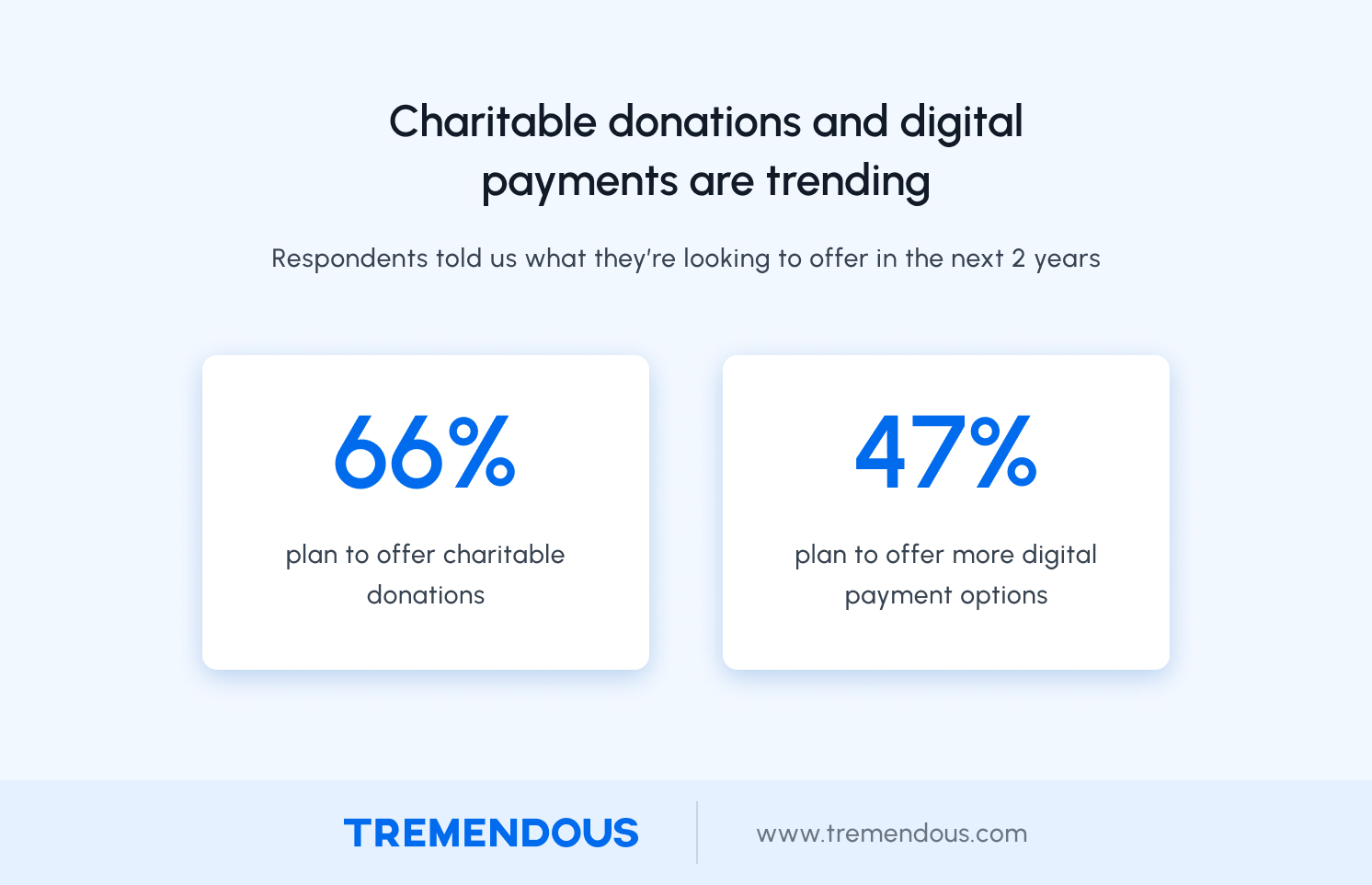How UX researchers approach incentives—in 9 charts
By Ian Floyd|4 min read|Updated Nov 17, 2022

Companies that want to inform product development with high-quality research need to offer incentives.
“If you’re not compensating people for their feedback, one, they are a lot less likely to give you any in the first place,” said Holly Cole, co-chair and CEO of the ResearchOps community. “So you’re fighting to get it. Two, the feedback that you do get is going to be lower quality, because free information is horribly biased.”
What, and how much, to offer as compensation can vary widely. Some organizations operate on small budgets or are otherwise prohibited from offering cash incentives (as in the case of some regulated industries like finance). Companies might instead offer swag, charitable donations, or some other form of non-monetary reward. Many companies have budgets exceeding $50,000 a year and use a variety of cash equivalents to recruit and engage participants.
At the ResearchOps Community’s conference in June, Tremendous polled more than three dozen research operations professionals on how they’re using incentives and what they’d like to do in the future. Here’s how some of the top tech companies, like Airtable, Booking.com. Chase, Disney, Duolingo, and Gitlab, are approaching UX research incentives.
Table of contents
UX research budgets

Two out of every five companies had an incentive budget less than $50,000 a year. Of the remaining respondents, there was an equal split between a $50k to $100k budget, and more than $100k.

More than half of the respondents reported increasing their incentive budget in the last two years. On average, budgets increased by 20% over the period.
One researcher for a digital sports media company said they increased incentives by 20% because it's “harder to recruit people for in-person research because of increasing gas prices.”
Another researcher said their team “realized incentivizing makes our ops more effective, so we upped it by 10%.”
Types of incentives UX researchers use

Prepaid cards (like Visa or MasterCard) are far and away the most popular means of paying research participants.
Few researchers, however, use cash or checks. The disadvantages of checks and cash are well documented, and it’s not surprising to find them at the bottom of the list.

While prepaid cards (such as Visa cards) are used by more than half of surveyed researchers, demand for digital payments and charitable giving are on the rise. Two-thirds of respondents plan to offer charitable donations in the next two years, and nearly half want to provide more digital payment options.
The trend is evident in Tremendous data, too. Charitable giving grew 118% from 2020 to 2021 and is projected to rise similarly in 2022. The nonprofits receiving the most donations include Save the Children, Doctors Without Borders, International Rescue Committee (IRC), American Red Cross, and Girls Who Code.

What UX researchers pay

There are many variables that factor into the denomination paid to UX research participants.
For an hour-long interview, respondents offered $85 on average. That sum went as high as $150 for some and as low as $50 for others.
Participation in a focus group garnered $72 on average, with a range between $50 and $150. Filling out a web survey offered $16 on average, ranging from $5 to $35.
How UX researchers distribute incentives

Manual processes continue to bog reops professionals down. Only a third of researchers use a third-party service to pay incentives. Many others complain of “hacking together” manual processes, often involving Amazon.com gift cards, which 26% of respondents use.

60% of researchers are looking for options to make international payments, yet they list that as their number one challenge to producing quality research.
“There’s plenty of places out there that are emerging markets where researchers really should be talking to people,” Cole said. “But giving them an Amazon or Visa gift card isn’t really appropriate because it’s not an economy that’s trusting of traditional banking systems.”
For many of these researchers, overcoming these international barriers requires the help of an incentive platform.

Among the things research operations professionals value the most are: 1) easy tracking and reporting, 2) user friendly interface 3) security, 4) variety of payment options, and no extra fees.
“... There’s something to be said for being able to give people confidence that they can walk into a meeting with their boss and their boss’s boss and whoever is holding the pursestrings at work and make a solid case for being able to pay participant stipends with a decent tool," Cole said.
Published July 13, 2022
Updated November 17, 2022


